The Finlandia Prize is a set of Finnish literary prizes awarded by the Finnish Book Foundation to "celebrate reading and highlight new Finnish first-rate literature." Considered the most prestigious in the nation, they are awarded annually in three categories: fiction, non-fiction and children's and youth literature. The prize was first awarded in 1984.
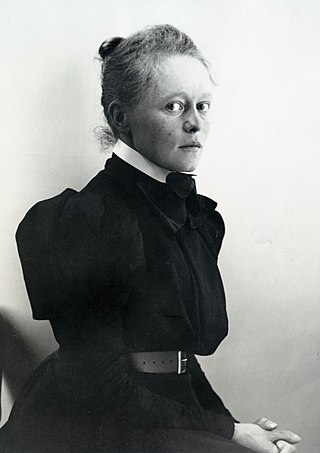
Helena Sofia (Helene) Schjerfbeck was a Finnish painter. A modernist painter, she is known for her realist works and self-portraits, and also for her landscapes and still lifes. Throughout her long life, her work changed dramatically beginning with French-influenced realism and plein air painting. It gradually evolved towards portraits and still life paintings. At the beginning of her career she often produced historical paintings, such as the Wounded Warrior in the Snow (1880), At the Door of Linköping Jail in 1600 (1882) and The Death of Wilhelm von Schwerin (1886). Historical paintings were usually the realm of male painters, as was the experimentation with modern influences and French radical naturalism. As a result, her works produced mostly in the 1880s did not receive a favourable reception until later in her life.
Her work starts with a dazzlingly skilled, somewhat melancholic version of late-19th-century academic realism…it ends with distilled, nearly abstract images in which pure paint and cryptic description are held in perfect balance.

The Order of the Lion of Finland is one of three official orders in Finland, along with the Order of the Cross of Liberty and the Order of the White Rose of Finland. The President of Finland is the Grand Master of all three orders. The orders are administered by boards consisting of a chancellor, a vice-chancellor and at least four members. The orders of the White Rose of Finland and the Lion of Finland have a joint board. The President of Finland wears the Star of the Order of the Lion of Finland.
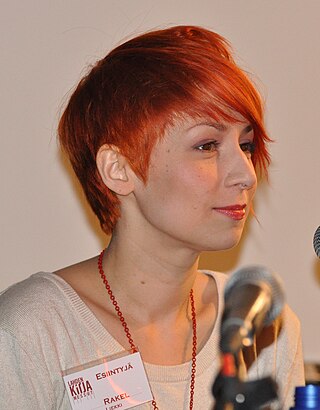
Tiina-Rakel Liekki is a Finnish artist, freelance journalist, writer, director and producer, and former pornographic actress.

The Senate Square presents Carl Ludvig Engel's architecture as a unique allegory of political, religious, scientific and commercial powers in the centre of Helsinki, Finland.

Finnish literature refers to literature written in Finland. During the European early Middle Ages, the earliest text in a Finnic language is the unique thirteenth-century Birch bark letter no. 292 from Novgorod. The text was written in Cyrillic and represented a dialect of Finnic language spoken in Russian Olonets region. The earliest texts in Finland were written in Swedish or Latin during the Finnish Middle Age. Finnish-language literature was slowly developing from the 16th century onwards, after written Finnish was established by the Bishop and Finnish Lutheran reformer Mikael Agricola (1510–1557). He translated the New Testament into Finnish in 1548.

Ateneum is an art museum in Helsinki, Finland and one of the three museums forming the Finnish National Gallery. It is located in the centre of Helsinki on the south side of Rautatientori square close to Helsinki Central railway station. It has the biggest collections of classical art in Finland. Before 1991 the Ateneum building also housed the Finnish Academy of Fine Arts and University of Art and Design Helsinki.

Paula Julia Vesala is a Finnish singer-songwriter, actress, and playwright. She was one of two singers and main lyricist in the pop rock duo PMMP along with Mira Luoti. Her solo career began in 2015 under the stage name "Vesala". She has composed songs for other well-known Finnish artists such as Vesa-Matti Loiri, Jenni Vartiainen, and Antti Tuisku.
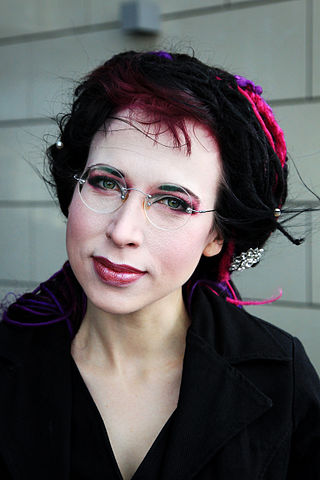
Sofi-Elina Oksanen is a Finnish writer and playwright. Oksanen has published six novels, of which "Purge" has gained the widest recognition. She has received several international and domestic awards for her literary work. Her work has been translated into more than 40 languages and sold more than two million copies. Oksanen has been called "Finnish-Estonian Charles Dickens" and her work has often been compared to Margaret Atwood's novels. Oksanen is actively involved in public debate in Finland and comments on current issues in her columns and various talk shows.
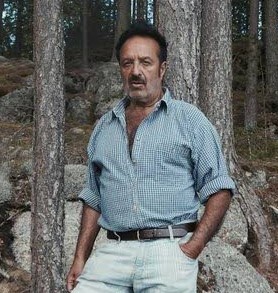
Veija "Veijo" Oskari Baltzar is a Romani author and visual artist from Finland.
The Runeberg prize is a Finnish literature prize founded in 1987.
Kiroileva siili is a comic strip written and drawn by Finnish artist Milla Paloniemi from Vantaa.
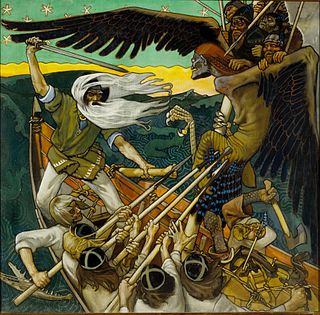
The Golden Age of Finnish Art coincided with the national awakening of Finland, during the era of the Grand Duchy of Finland under the Russian Empire. It is believed to span an era from the late 19th Century to the early 20th Century, approximately 1880 to 1910. The epic poetry form known as Kalevala, developed during the 19th Century, provided the artistic inspiration for numerous themes at the time, including in visual arts, literature, music and architecture; however, the "Golden Age of Finnish Art" is generally regarded as referring to the realist and romantic nationalist painters of the time. Notable figures of the time include Akseli Gallen-Kallela, Pekka Halonen, Albert Edelfelt, Jean Sibelius, Eino Leino, Helene Schjerfbeck, Emil Wikström, Eero Järnefelt and Eliel Saarinen.

Eeva-Kaarina Aronen was a Finnish author and journalist. Her novels were nominated for the Runeberg Prize and the Finlandia Prize.
Annika Idström was a Finnish author, dramaturg, and translator.

Glory Leppänen was a Finnish actress, theatre and film director, and writer.

Anu Kaipainen was a prolific Finnish writer and literary critic.
Riikka Pelo is a Finnish writer, best known for her novels Taivaankantaja (2006), which was nominated for a Runeberg Prize, and Jokapäiväinen elämämme (2013), for which she won a Finlandia Prize.
Alexandra Salmela is a Slovak author, best known for her Finnish novel 27 eli kuolema tekee taiteilijan (2010), for which she won a Helsingin Sanomat Literature Prize, and was nominated for a Finlandia Prize.
Pauliina Susi is a Finnish writer. Her debut novel Ruuhkavuosi was nominated for the Helsingin Sanomat Literature Prize in 2005. In 2016, she received a Lead of the Year award from the Finnish Detective Society for her book Takaikkuna (2015).













